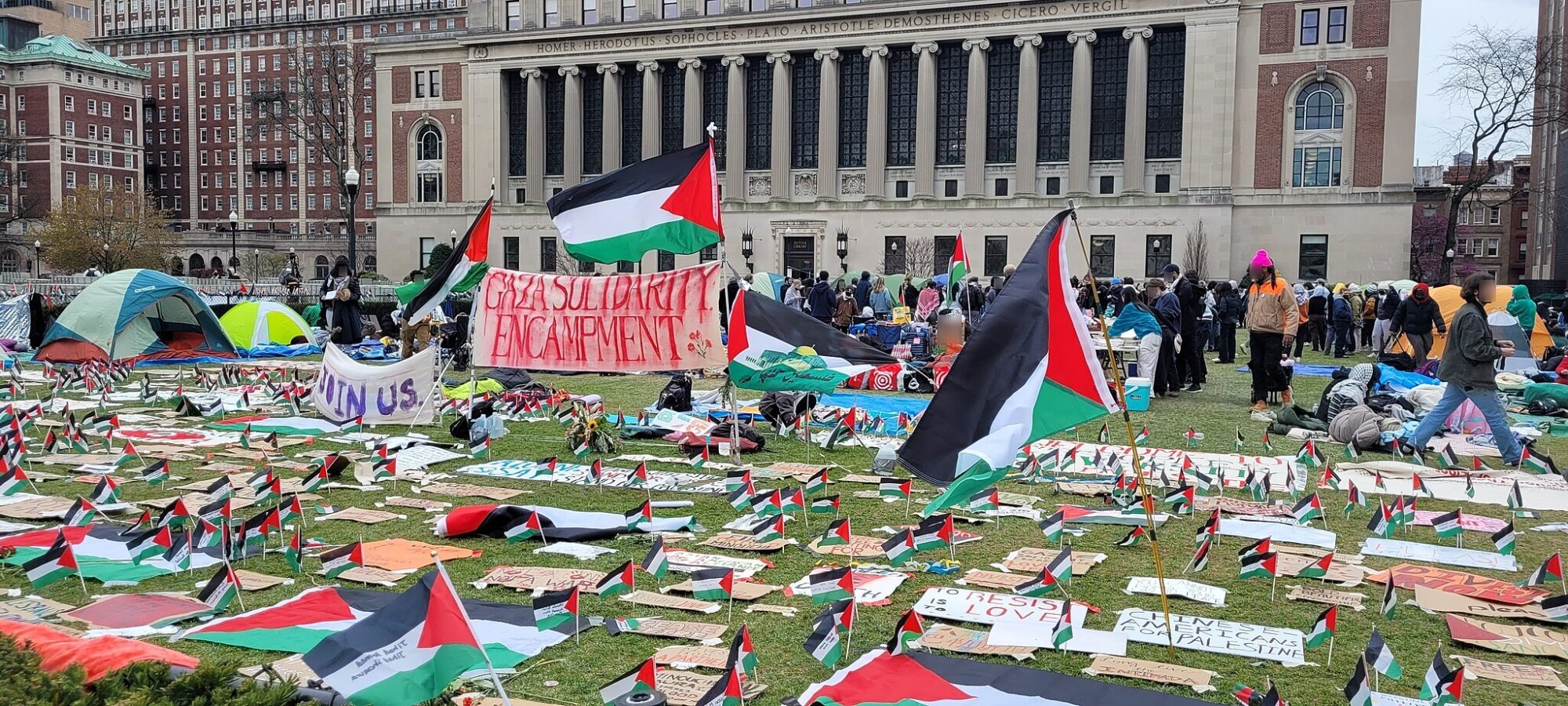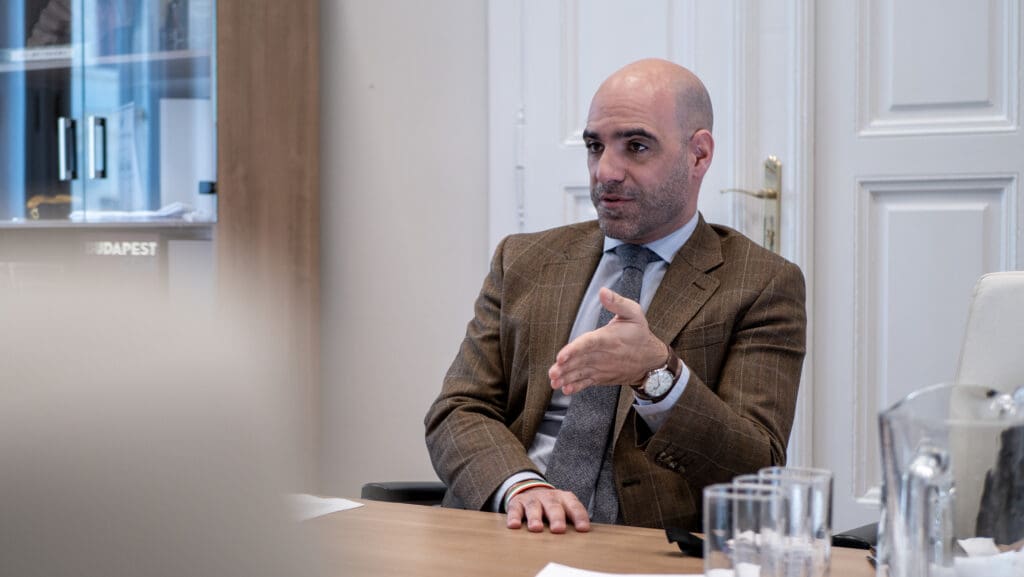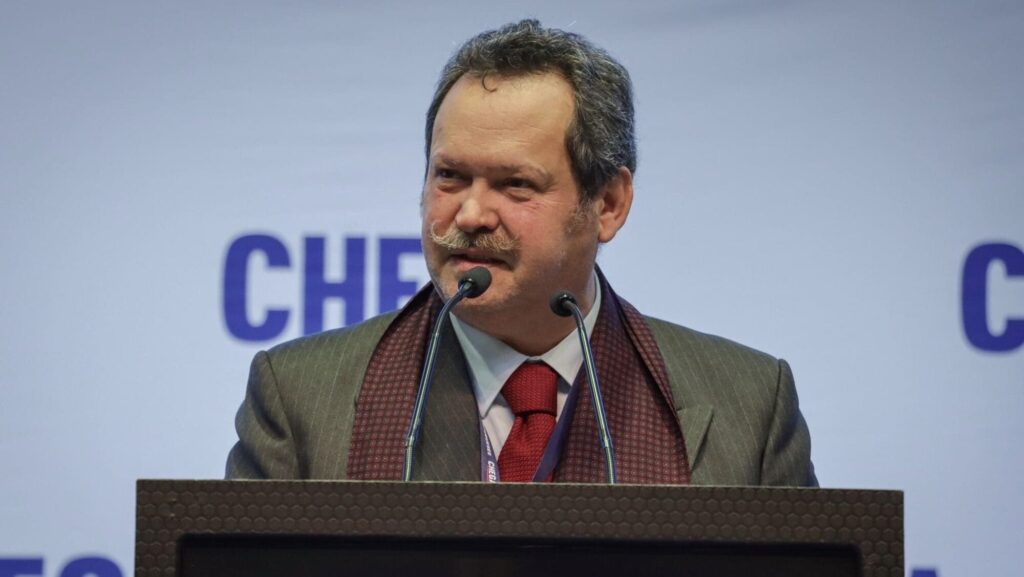According to a report by the Institute for the Study of Global Antisemitism and Policy (ISGAP), the Students for Justice in Palestine (one of the main organisers of the protests at Columbia University) have received millions from charities with alleged links to Hamas. In a recent interview, Emmanuel Razavi described the flow of this murky money and the roots of the Islamo-Leftist connection.
Of Iranian origin, Razavi is a senior reporter specialising in the Middle East. He works for Paris Match, Franc-Tireur, Politique Internationale, and Valeurs Actuelles. He has made video documentaries on the Middle East and is the author of several books. His latest, La face cachée des Mollahs (The dark side of the Mullahs) (Cerf, 2024), reveals the mafia-like and terrorist face of the Islamic Republic of Iran.
According to a new report by the Institute for the Study of Global Antisemitism and Policy (ISGAP), the student organization Students for Justice in Palestine (SJP) has received $3 million from charities with alleged links to Hamas. SJP is one of the main organizers of protests at Columbia University. What does this funding reveal? Are Western mobilizations against the war in Gaza financed and supported in part by murky funding?
This pro-Palestinian university association, which was behind the protests at Columbia University, is said to have received nearly $3 million in annual funding from associations linked to personalities close to Hamas. I’ve been warning about this phenomenon for several months, because the same thing is happening in Europe. But the question is: who is behind Hamas? Its sponsors include Qatar and Turkey, as well as Iran. Over the past two years, for Paris Match, Franc-Tireur, and for my book La Face cachées des Mollahs, I have worked at length on the financial circuits of the Iranian regime, as well as on its illegal trafficking and lobbying circuits.
It’s important to understand that since 1978, several months before the advent of the Islamic revolution in Iran, Ayatollah Khomeini had been busy building up a network of influence, particularly in far-left academic circles. Philosopher Michel Foucault described Khomeini as “wise,” and supported his revolution. Jean-Paul Sartre, for his part, was part of a Khomeini support committee. Although Khomeini had written in his texts about his plan for the totalitarian Islamization of Iran, they ignored it completely. This support from left-wing intellectuals served to cheaply legitimize the Islamic Republic in the West, and the lesson was learned, to say the least, by his successor Ali Khamenei.
Today, high-level sources in Iran tell me that the intelligence services of the Islamic Republic of Iran are partly manipulating these student demonstrations, once again relying on the same types of far-left networks, as well as organizations linked directly or indirectly to the Muslim Brotherhood and Hamas in France.
In Europe, the Islamic Republic’s relays are operated by individuals, but also by its network of embassies, which are nests of agents of the Iranian regime. What is surprising is that, while the Islamic Republic of Iran spends millions on lobbying around the world, particularly in the United States and the European Union, it probably spends the least in France. Indeed, the networks of academics and students who take up the language of Hamas are ideologically convinced by the Islamists’ anti-Western, anti-Zionist and anti-colonial themes. The mullahs thus operate at little cost compared to the Turkish and Russian services, even if it is clear that their action is accompanied by funding.
Are Middle Eastern countries behind this funding? Are other international countries also involved? What are the objectives of these nations with regard to Western companies?
Several countries are involved alongside Iran. Turkey, for example, is involved via its networks within Islamist brotherhoods such as the mili gorus. Qatar is providing millions in funding for universities in the United States. What needs to be analyzed is that, for the Mullahs, the barriers between Shiism and Sunnism are breaking down. Shiite Iran, Israel’s sworn enemy, has understood the need to exploit the Palestinian question to put pressure on the West. In fact, the Mullahs consider that our Western democracies are going through economic, social and political crises that are weakening them, and that now is the perfect time to weaken them and impose their Islamist software. We have to take this seriously, because the convergence between these countries, which usually have complex relations, and the Islamist organization of the Muslim Brotherhood, which has mutated considerably in recent years, signals a massive attack on American and European democracies in terms of influence strategy.
When I say this, I’m weighing my words, because our democratic foundations are in danger. The Iranian Islamists have an expression that goes something like this: “first Israel, then the West.” I think this shows what they’re up to. I would remind you that the Iranian Revolution began along similar lines, with an alliance between Islamists and communists in the universities. The result was that Iran became a modern country with one of the best armies in the world. Having said that, my investigation also showed me that the Iranian secret services had links with the Russian services, and that they sometimes coordinated certain destabilization and influence operations in Europe. Putin has also used the Muslim Brotherhood networks, of which Hamas is a part, for strategic purposes.
Do far-left movements also encourage and participate in protest movements in the West against the war in Gaza, or via funding?
Yes, they do. Listen to the anti-Zionist dialectic of these far-left movements. It’s that of the Palestinian Muslim Brotherhood, and very close to that of the Islamic Republic of Iran. It constantly flirts with antisemitism. Recently, in London and Canada, we’ve seen people demonstrating with posters of Khomeini, or flags of the Islamic Republic. In the United States, students have chanted “death to America” in Farsi.
Do you think it’s a coincidence that Iran’s Supreme Leader, Ali Khamenei, supported the students protesting at Western universities? I would remind you that the revisionist approach of accusing the Israeli democracy of genocide—which is nonsense—is again very similar to what the extreme left did in 1978 and 1979. Back then, they accused the Shah of Iran, who had imposed equality between men and women, generalized access to culture and education, and redistributed land to the most disadvantaged families, of all the evils. Almost everything these militants claimed was wrong, but they still managed to overthrow him, with the support of the West. By the way, did you know that some of the Shah’s ministers were very open to the ideas of the humanist Left? Nobody talks about it, even though it was a reality. But far-left revisionism, then the Islamists, erased all that.
I’m not saying that everything was perfect in 1970s Iran, but it was certainly better than what’s been going on there for the past 45 years.
So when I hear Mathilde Panot or Jean-Luc Mélenchon [the leaders of the far-left La France Insoumise party who justified the Hamas attack on Israel as an “armed offensive”] today, I’m worried. Most of their discourse is biased, not to mention false, and therefore dangerous, as it paves the way for a fracture within our democracy itself.
These people should study the history of Iran. After all, once he came to power, Khomeini had his former far-left allies arrested and executed. In the light of this history, which I know well, I think that the far Left is the useful idiot of Islamism. In the meantime, we must take very seriously the threat posed to our democracies by the Muslim Brotherhood, their state sponsors, and their far-left allies. Otherwise, I’m afraid, things will end badly.
This interview was published in French by Atlantico on May 21, 2024. It has been translated into English and appears here with kind permission.






